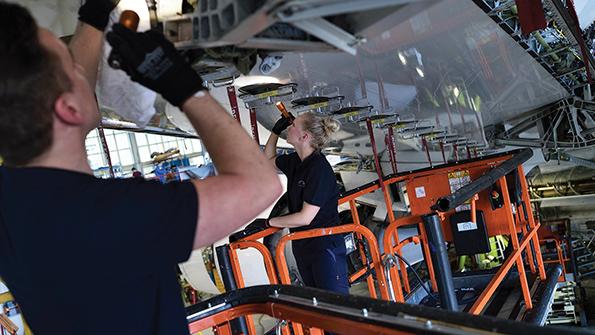
EASA will examine several maintenance human factors issues in the coming years.
Fatal commercial air transport accidents are almost incomprehensibly rare. The current rate is somewhere around 0.04 fatal occurrences per million departures, or about one fatal accident for every 25 million flights.
Hull losses are more common, but at 0.22 per million flights—one written-off airframe for every 4.5 million departures—they are hardly a regularity.
Achieving these rates has been decades in the making. Along the way, industry has solved the easy issues. Rare is the major event that investigators trace back to equipment failure or the lack of an available technology, such as terrain-awareness or collision-avoidance systems.
Most of today’s accident sequences stem from a single variable: human performance.
The European Union Aviation Safety Agency’s (EASA) updated European Plan for Aviation Safety (EPAS) underscores this reality and helps illustrate the complexity involved in accounting for human behavior throughout the aviation ecosystem.
EPAS serves as Europe’s safety road map, laying out priorities for regulators that flow down to operators and other certificate holders. Formerly a five-year outlook, the latest plan has been cut to three years “to create a greater stability . . . allowing for greater focus and faster, smoother implementation,” EASA Executive Director Patrick Ky writes in the document’s introduction.
The latest version, made public in mid-January, includes several new human factors (HF) initiatives. At one end of the aviation safety spectrum is increased focus on the human-machine interface during the design process.
“Recent experience has shown that a disparity may exist between observed flight crew behaviors and underlying assumptions about flight crew recognition, interpretation and response that applicants have made during the design and certification process,” EASA explains, noting that lessons learned from the two fatal Boeing 737 MAX accidents, in 2018 and 2019, spotlighted the issue. “To ensure that applicants conduct a systematic and structured activity to demonstrate the validity of assumptions, a certification memorandum (CM) is currently being developed by EASA to stress the importance of considering HF in aircraft and system” hazard assessments.
On the operations side, EASA plans to address several more straightforward but equally complex risks. For one of those risks, procedural noncompliance, a new initiative will develop “technical guidance” for investigations.
“The task deliverables should help users to ask more and better questions related to procedural noncompliance,” EASA explains in the road map. “The root cause analysis results should make it easier for industry safety practitioners to effectively identify causes of procedural noncompliance and rapidly implement solutions.”
A related task focuses on developing and refining procedures to ensure they are safe, technically correct and as standardized as possible. EASA plans to review current methods and, where appropriate, recommend changes.
The agency also will underscore that procedural compliance, while important, does not ensure safety. “Safety emerges from systematic interactions (people, artifacts, training, etc.) and consequently increased focus should be aimed at adaptation skills and defensive operating techniques, ultimately fostering team resilience,” EASA says. “To prevent overreliance on procedures, it is important to stimulate the industry to focus on increasing human and systematic resilience. This means that training regarding human performance variabilities in complex operational conditions must go beyond procedural compliance.”
Another project will examine the human factors ramifications of electronic checklists (ECL) that technicians use.
“ECL for maintenance personnel sometimes lack a structured human factors design approach and can contradict well-established design philosophies of the flight deck, e.g. the use of color,” EASA writes. “The action is intended to investigate how properly designed ECL for maintenance personnel could help to provide the same benefits as ECL for flight crews and, as a consequence, reduce human error of maintenance personnel.”
The project is not slated to generate new rules or formal guidance. Instead, EASA plans to share what it learns through a promotional campaign with a guide backed by articles, podcasts, videos and other outreach.
The EPAS human-factors-related elements extend beyond these priorities. The latest edition elevates “competence of personnel” as a stand-alone strategic priority, with a specific focus on pilots, cabin crew, technicians, air traffic controllers and “cross-domain” areas.
“Managing safety in a complex socio-technical system, such as aviation, requires knowledge and understanding of how and where people work within that system and what may positively or negatively affect their performance,” EASA states. “Focus on human factors and human performance, as an integral part of safety management, is therefore essential in building a safe, secure, sustainable and resilient aviation system.”


